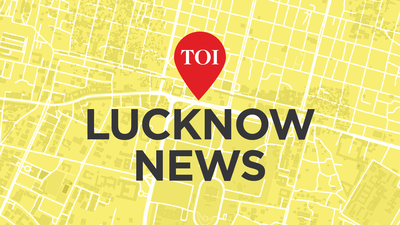Health
Urgent Call for Awareness on Craniosynostosis in Children

Parents are being urged to seek immediate medical attention if they notice any unusual features in their child’s head or face. Symptoms such as an unusually large head, protruding eyes, uneven facial structure, or prominent scalp veins could indicate craniosynostosis, a serious congenital craniofacial disorder. This condition occurs when one or more of the skull bones fuse prematurely, which can impact the shape of the head and face and potentially hinder brain development.
At the recent 4th Indo-Gulf Twin City Craniofacial Conference held at Hotel Clarks Avadh in Lucknow, Dr. Rajiv Agarwal, the head of plastic surgery at Sanjay Gandhi Postgraduate Institute of Medical Sciences (SGPGIMS), highlighted the prevalence of craniofacial disorders in the region. He noted that approximately 3 percent of the population in Uttar Pradesh suffers from conditions like craniosynostosis. As the disorder progresses, the child’s facial appearance changes, and brain development can be adversely affected, which in turn hampers overall physical growth.
Dr. Agarwal emphasized the importance of vigilant monitoring by parents, stating, “At first glance, such children may appear malnourished, but the underlying issue could be craniosynostosis.” He encourages parents to carefully observe their newborn’s head shape and seek medical advice if they notice any abnormal changes. He also shared that his team sees one new case of craniosynostosis every month.
Importance of Early Diagnosis and Treatment
Timely diagnosis and surgical intervention within the first year of life can significantly improve outcomes for affected children. Dr. Agarwal noted that when treated early, children have a chance to lead normal lives. Unfortunately, he reported that about 50 percent of patients arrive at hospitals after their first birthday, which complicates surgery and increases the risk of complications. “With timely surgery and proper medication, the condition can be controlled effectively,” he added.
During the conference, Dr. Taimoor Al Bulushi from Muscat echoed Dr. Agarwal’s concerns, stressing that early treatment not only restores physical appearance but also prevents social stigma. “If surgery is performed before the age of 1, the child looks normal by the time they are admitted to school,” he said.
Dr. Al Bulushi further pointed out that children with untreated craniosynostosis often face teasing from peers, leading to social discrimination. He called for increased awareness and empathy toward these children, emphasizing the critical role of social acceptance in their development.
Experts concluded that early diagnosis, prompt surgical intervention, and fostering a supportive environment are essential for children with craniosynostosis. With these measures, affected children can lead healthy, confident, and fulfilling lives, free from the challenges posed by their condition.
-

 World3 months ago
World3 months agoSBI Announces QIP Floor Price at ₹811.05 Per Share
-

 Lifestyle3 months ago
Lifestyle3 months agoCept Unveils ₹3.1 Crore Urban Mobility Plan for Sustainable Growth
-

 Science3 months ago
Science3 months agoNew Blood Group Discovered in South Indian Woman at Rotary Centre
-

 Sports3 months ago
Sports3 months agoBroad Advocates for Bowling Change Ahead of Final Test Against India
-

 World3 months ago
World3 months agoTorrential Rains Cause Flash Flooding in New York and New Jersey
-

 Top Stories3 months ago
Top Stories3 months agoKonkani Cultural Organisation to Host Pearl Jubilee in Abu Dhabi
-

 Science3 months ago
Science3 months agoNothing Headphone 1 Review: A Bold Contender in Audio Design
-

 Top Stories3 months ago
Top Stories3 months agoAir India Crash Investigation Highlights Boeing Fuel Switch Concerns
-

 Sports3 months ago
Sports3 months agoCristian Totti Retires at 19: Pressure of Fame Takes Toll
-

 Business3 months ago
Business3 months agoIndian Stock Market Rebounds: Sensex and Nifty Rise After Four-Day Decline
-

 Politics3 months ago
Politics3 months agoAbandoned Doberman Finds New Home After Journey to Prague
-

 Top Stories3 months ago
Top Stories3 months agoPatna Bank Manager Abhishek Varun Found Dead in Well









